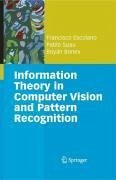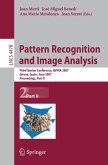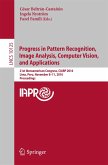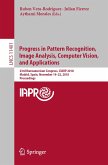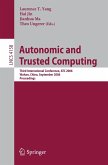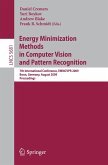Information Theory (IT) can be highly effective for formulating and designing algorithmic solutions to many problems in Computer Vision and Pattern Recognition (CVPR).
This text introduces and explores the measures, principles, theories, and entropy estimators from IT underlying modern CVPR algorithms, providing comprehensive coverage of the subject through an incremental complexity approach. The authors formulate the main CVPR problems and present the most representative algorithms. In addition, they highlight interesting connections between elements of IT when applied to different problems, leading to the development of a basic research roadmap (the ITinCVPR tube). The result is a novel tool, unique in its conception, both for CVPR and IT researchers, which is intended to contribute as much as possible to a cross-fertilization of both areas.
Topics and features:
A must-read not only for researchers in CVPR-IT, but also for the wider CVPR community, this text is also suitable for a one semester IT-based coursein CVPR.
---
Information theory has found widespread use in modern computer vision, and provides one of the most powerful current paradigms in the field. To date, though, there has been no text that focusses on the needs of the vision or pattern recognition practitioner who wishes to find a concise reference to the subject. This text elegantly fills this gap in the literature. The approach is rigorous, yet lucid and furnished with copious real world examples. Professor Edwin Hancock, Head CVPR Group and Chair Department Research Committee, Department of Computer Science, University of York
---
Far from being a shotgun wedding or arranged marriage between information theory and image analysis, this book succeeds at explicating just why these two areas are made for each other. Associate Professor Anand Rangarajan, Department of Computer & Information Science and Engineering, University of Florida, Gainesville
This text introduces and explores the measures, principles, theories, and entropy estimators from IT underlying modern CVPR algorithms, providing comprehensive coverage of the subject through an incremental complexity approach. The authors formulate the main CVPR problems and present the most representative algorithms. In addition, they highlight interesting connections between elements of IT when applied to different problems, leading to the development of a basic research roadmap (the ITinCVPR tube). The result is a novel tool, unique in its conception, both for CVPR and IT researchers, which is intended to contribute as much as possible to a cross-fertilization of both areas.
Topics and features:
- Introduces contour and region-based image segmentation incomputer vision, covering Jensen-Shannon divergence, the maximum entropy principle, the minimum description length (MDL) principle, and discriminative-generative approaches to segmentation
- Explores problems in image and pattern clustering, discussing Gaussian mixtures, information bottleneck, robust information clustering, and IT-based mean-shift, as well as strategies to form clustering ensembles
- Includes a selection of problems at the end of each chapter, to both consolidate what has been learnt and to test the ability of generalizing the concepts discussed
- Investigates the application of IT to interest points, edge detection and grouping in computer vision, including the concept of Shannon's entropy, Chernoff information and mutual information, Sanov's theorem, and the theory of types
- Reviews methods of registration, matching and recognition of images and patterns, considering measuresrelated to the concept of mutual information, alternative derivations of Jensen-Shannon divergence, the Fisher-Rao metric tensor, and the application of the MDL principle to tree registration
- Supplies additional material, including sketched solutions and additional references, at http://www.rvg.ua.es/ITinCVPR
- Examines the main approaches to feature selection and feature transform, describing the methods of principal component analysis and its generalization, and independent component analysis, together with filter, wrapper and on-line methods
- Explores the IT approach for classifier design including classifiers ensembles and connections with information projection and information geometry.
- Contains a Foreword by Professor Alan Yuille
A must-read not only for researchers in CVPR-IT, but also for the wider CVPR community, this text is also suitable for a one semester IT-based coursein CVPR.
---
Information theory has found widespread use in modern computer vision, and provides one of the most powerful current paradigms in the field. To date, though, there has been no text that focusses on the needs of the vision or pattern recognition practitioner who wishes to find a concise reference to the subject. This text elegantly fills this gap in the literature. The approach is rigorous, yet lucid and furnished with copious real world examples. Professor Edwin Hancock, Head CVPR Group and Chair Department Research Committee, Department of Computer Science, University of York
---
Far from being a shotgun wedding or arranged marriage between information theory and image analysis, this book succeeds at explicating just why these two areas are made for each other. Associate Professor Anand Rangarajan, Department of Computer & Information Science and Engineering, University of Florida, Gainesville
Dieser Download kann aus rechtlichen Gründen nur mit Rechnungsadresse in A, B, BG, CY, CZ, D, DK, EW, E, FIN, F, GR, HR, H, IRL, I, LT, L, LR, M, NL, PL, P, R, S, SLO, SK ausgeliefert werden.

